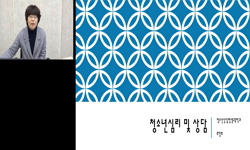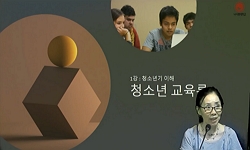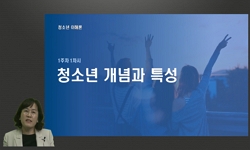Purpose: This study was conducted to compare the postural habits, body image, and peer attachment of adolescents with idiopathic scoliosis and healthy adolescents, and to examine the correlation between body image and peer attachment in each group. Me...
http://chineseinput.net/에서 pinyin(병음)방식으로 중국어를 변환할 수 있습니다.
변환된 중국어를 복사하여 사용하시면 됩니다.
- 中文 을 입력하시려면 zhongwen을 입력하시고 space를누르시면됩니다.
- 北京 을 입력하시려면 beijing을 입력하시고 space를 누르시면 됩니다.


특발성 척추측만증 청소년과 정상 청소년의 자세습관, 신체상 및 또래관계 비교 = Comparisons of Postural Habits, Body Image, and Peer Attachment for Adolescents with Idiopathic Scoliosis and Healthy Adolescents
한글로보기부가정보
다국어 초록 (Multilingual Abstract)
Purpose: This study was conducted to compare the postural habits, body image, and peer attachment of adolescents with idiopathic scoliosis and healthy adolescents, and to examine the correlation between body image and peer attachment in each group. Methods: Eighty-three adolescents with idiopathic scoliosis and 83 healthy adolescents were recruited from 4 middle schools located in W city. Data were collected from November 22 to December 6 2010 using a structured questionnaire including items about postural habits, body image, and peer attachment. Data were analyzed using descriptive statistics, χ2-test, independent t-test and Pearson Correlation Coefficient. Results: Compared to healthy adolescents, adolescents with idiopathic scoliosis were more likely to use one hand, to lean back while seated, and to put weight on one leg while standing. The score for body image was significantly lower for adolescents with idiopathic scoliosis compared to healthy adolescents, but peer attachment was not significantly different between the two groups. Body image was significantly correlated with peer attachment only for the adolescents with idiopathic scoliosis. Conclusion: Interventions to promote balanced postural habits in adolescents with idiopathic scoliosis are needed. Information on body image and peer attachment for these adolescents should also be considered when developing interventions.
참고문헌 (Reference)
1 최지은, "청소년이 지각한 부모-자녀 관계, 또래 관계, 교사와의 관계가 학교생활 적응에 미치는 영향" 대한가정학회 41 (41): 199-210, 2003
2 이찬희, "척추측만증 학생과 정상 학생의 체격, 체력 및 정신건강 비교" 한국발육발달학회 14 (14): 87-94, 2006
3 김미예, "저신장증 아동과 정상 아동의 신체상, 자아존중감 및 문제행동" 아동간호학회 16 (16): 41-48, 2010
4 박미정, "자세관리프로그램이 초등학생의 척추측만 정도와 자세에 대한 지식에 미치는 영향" 한국간호과학회 33 (33): 643-650, 2003
5 이명숙, "자기효능증진법을 병용한 척추교정운동이 척추측만증 중학생의 신체적, 심리적 기능에 미치는 효과" 한국간호교육학회 14 (14): 282-293, 2008
6 최종인, "성장기 여중생의 생활 및 운동습관이 척추측만증에 미치는 영향" 한국발육발달학회 12 (12): 135-146, 2004
7 이영미, "남녀 청소년의 신체상과 부모자녀 간 의사소통의 개방성에 따른 자아가치감" 한국인간발달학회 16 (16): 79-94, 2009
8 김민정, "국내 초․중․고등학생들의 척추질환 진료경향 분석" 대한침구의학회 27 (27): 43-49, 2010
9 임용택, "교정체조의 실시에 따른 여중생의 척추측만증 개선에 관한 연구" 한국사회체육학회 20 (20): 1341-1347, 2003
10 정선욱, "가정외 보호를 받는 청소년과 일반가정 청소년의 애착유형 및 또래관계에 관한 연구" 한국사회복지연구회 20 : 149-172, 2002
1 최지은, "청소년이 지각한 부모-자녀 관계, 또래 관계, 교사와의 관계가 학교생활 적응에 미치는 영향" 대한가정학회 41 (41): 199-210, 2003
2 이찬희, "척추측만증 학생과 정상 학생의 체격, 체력 및 정신건강 비교" 한국발육발달학회 14 (14): 87-94, 2006
3 김미예, "저신장증 아동과 정상 아동의 신체상, 자아존중감 및 문제행동" 아동간호학회 16 (16): 41-48, 2010
4 박미정, "자세관리프로그램이 초등학생의 척추측만 정도와 자세에 대한 지식에 미치는 영향" 한국간호과학회 33 (33): 643-650, 2003
5 이명숙, "자기효능증진법을 병용한 척추교정운동이 척추측만증 중학생의 신체적, 심리적 기능에 미치는 효과" 한국간호교육학회 14 (14): 282-293, 2008
6 최종인, "성장기 여중생의 생활 및 운동습관이 척추측만증에 미치는 영향" 한국발육발달학회 12 (12): 135-146, 2004
7 이영미, "남녀 청소년의 신체상과 부모자녀 간 의사소통의 개방성에 따른 자아가치감" 한국인간발달학회 16 (16): 79-94, 2009
8 김민정, "국내 초․중․고등학생들의 척추질환 진료경향 분석" 대한침구의학회 27 (27): 43-49, 2010
9 임용택, "교정체조의 실시에 따른 여중생의 척추측만증 개선에 관한 연구" 한국사회체육학회 20 (20): 1341-1347, 2003
10 정선욱, "가정외 보호를 받는 청소년과 일반가정 청소년의 애착유형 및 또래관계에 관한 연구" 한국사회복지연구회 20 : 149-172, 2002
11 Mirtz, T. A., "lescent idiopathic scoliosis screening for school, community, and clinical health promotion practice utilizing the PRECEDE-PROCEED model" 13 (13): 1-11, 2005
12 Hockenberry, M. J., "Wong’s nursing care of infant and children (8th ed.)" Mosby 2006
13 Glattes, C., "The reliability and concurrent validity of the scoliosis research society-22r patient questionnaire compared with the child health questionnaire-CF 87 patient questionnaire for adolescent spinal deformity" 32 : 1778-1784, 2007
14 Jegal, B. B., "The relationship between lifestyle and adolescent idiopathic scoliosis" Keimyung University 2008
15 Chen, P. Q.., "The postural stability control and gait pattern of idiopathic scoliosis adolescents" 13 : 52-58, 1998
16 Armsden, G. C., "The inventory of parent and peer attachment: Individual differences and their relationship to psychological well-being in adolescence" 16 : 427-453, 1987
17 Kim, Y. K., "The effects of peerrelations on psychosocial adjustments and behavior characteristics in children and young adolescents." 14 : 65-82, 2001
18 National Scoliosis Foundation and DePuy Spine, Inc, "Scoliosis media and community giude"
19 Sapountzi-Krepia, D. S., "Perception of body image, happiness and satisfaction in adolescents wearing a Boston brace for scoliosis treatment" 35 : 683-690, 2001
20 Burns, C. E., "Pediatric primary care (4th ed.)" Saunders 2009
21 Packham, J. C., "Long-term follow-up of 246 adults with juvenile idiopathic arthritis: Social function, relationships and sexual activity" 41 : 1440-1443, 2002
22 Markey, C. N., "Invited commentary: Why body image is important to adolescent development" 39 : 1387-1391, 2010
23 Wick, J. M., "Infantile and juvenile scoliosis: The crooked path to diagnosis and treatment" 90 : 347-373, 2009
24 Suh, S. W., "Idiopathic scoliosis in Korean schoolchildren: a prospective screening study of over 1 million children" SPRINGER 20 (20): 1087-1094, 2011
25 Payne, W. K., "Does scoliosis have a psychological impact and does gender make a difference" 22 : 1380-1384, 1997
26 Kang, S. Y., "Correlation between change in curve and flexibility in girls with mild scoliosis" 7 : 109-115, 2003
27 Giampietro, P. F., "Congenital and idiopathic scoliosis: Clinical and genetic aspects" 1 : 125-136, 2003
28 Mendelson, B. K., "Body-esteem scale for adolescents and adults" 76 : 90-106, 2001
29 Reamy, B. V., "Adolescent idiopathic scoliosis review and current concepts" 64 : 111-116, 2001
동일학술지(권/호) 다른 논문
-
초산모와 경산모의 모성역할 자신감에 대한 영향요인 비교
- 한국아동간호학회
- 정성석
- 2011
- KCI등재,SCOPUS
-
학령기 아동이 인지한 부모의 양육태도, 문제행동과 적응유연성과의 관계
- 한국아동간호학회
- 윤현정
- 2011
- KCI등재,SCOPUS
-
초등학교 저학년 학부모의 성지식과 성교육에 대한 인식 및 실태 비교
- 한국아동간호학회
- 진현수
- 2011
- KCI등재,SCOPUS
-
- 한국아동간호학회
- 노인숙
- 2011
- KCI등재,SCOPUS
분석정보
인용정보 인용지수 설명보기
학술지 이력
| 연월일 | 이력구분 | 이력상세 | 등재구분 |
|---|---|---|---|
| 2023 | 평가예정 | 해외DB학술지평가 신청대상 (해외등재 학술지 평가) | |
| 2020-01-01 | 평가 | 등재학술지 유지 (해외등재 학술지 평가) |  |
| 2015-10-02 | 학회명변경 | 한글명 : 아동간호학회 -> 한국아동간호학회 |  |
| 2015-01-01 | 평가 | 등재학술지 유지 (등재유지) |  |
| 2012-12-24 | 학술지명변경 | 한글명 : Journal of Korean Academy of Child Health Nursing -> Child Health Nursing Research외국어명 : Journal of Korean Academy of Child Health Nursing -> Child Health Nursing Research |  |
| 2011-01-01 | 평가 | 등재학술지 유지 (등재유지) |  |
| 2010-12-24 | 학술지명변경 | 한글명 : 아동간호학회지 -> Journal of Korean Academy of Child Health Nursing |  |
| 2010-08-21 | 학술지명변경 | 한글명 : 대한아동간호학회지 -> 아동간호학회지 |  |
| 2009-01-01 | 평가 | 등재학술지 유지 (등재유지) |  |
| 2008-07-01 | 학회명변경 | 한글명 : 대한아동간호학회 -> 아동간호학회영문명 : Korean Academic Society Of Child Health Nursing -> Korean Academy of Child Health Nursing |  |
| 2006-01-01 | 평가 | 등재학술지 선정 (등재후보2차) |  |
| 2005-05-28 | 학술지명변경 | 외국어명 : The Korean Journal of Child Halth Nursing -> Journal of Korean Academy of Child Health Nursing |  |
| 2005-01-01 | 평가 | 등재후보 1차 PASS (등재후보1차) |  |
| 2003-01-01 | 평가 | 등재후보학술지 선정 (신규평가) |  |
학술지 인용정보
| 기준연도 | WOS-KCI 통합IF(2년) | KCIF(2년) | KCIF(3년) |
|---|---|---|---|
| 2016 | 1.04 | 1.04 | 1.15 |
| KCIF(4년) | KCIF(5년) | 중심성지수(3년) | 즉시성지수 |
| 1.11 | 1.19 | 1.497 | 0.1 |




 ScienceON
ScienceON






